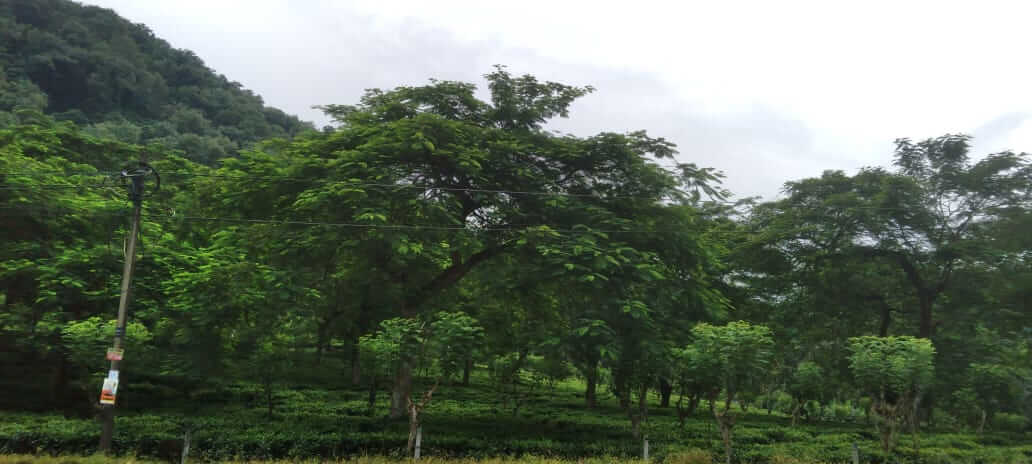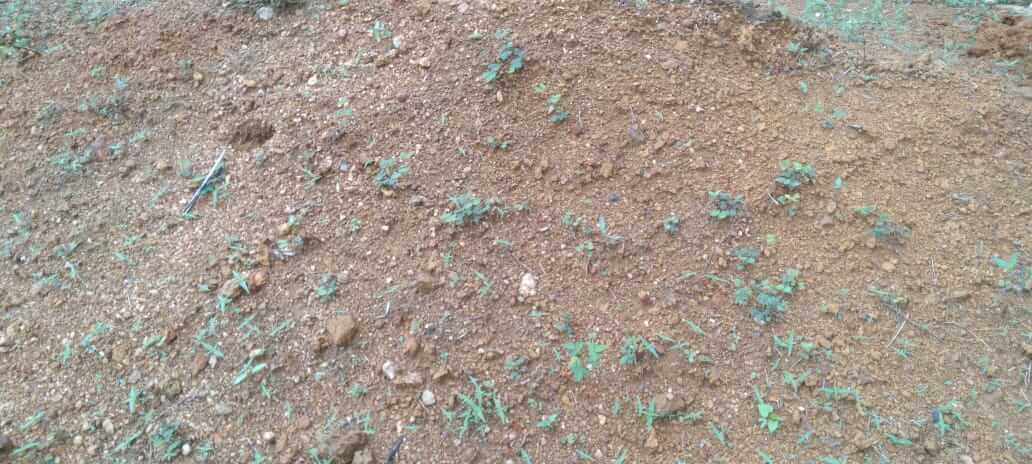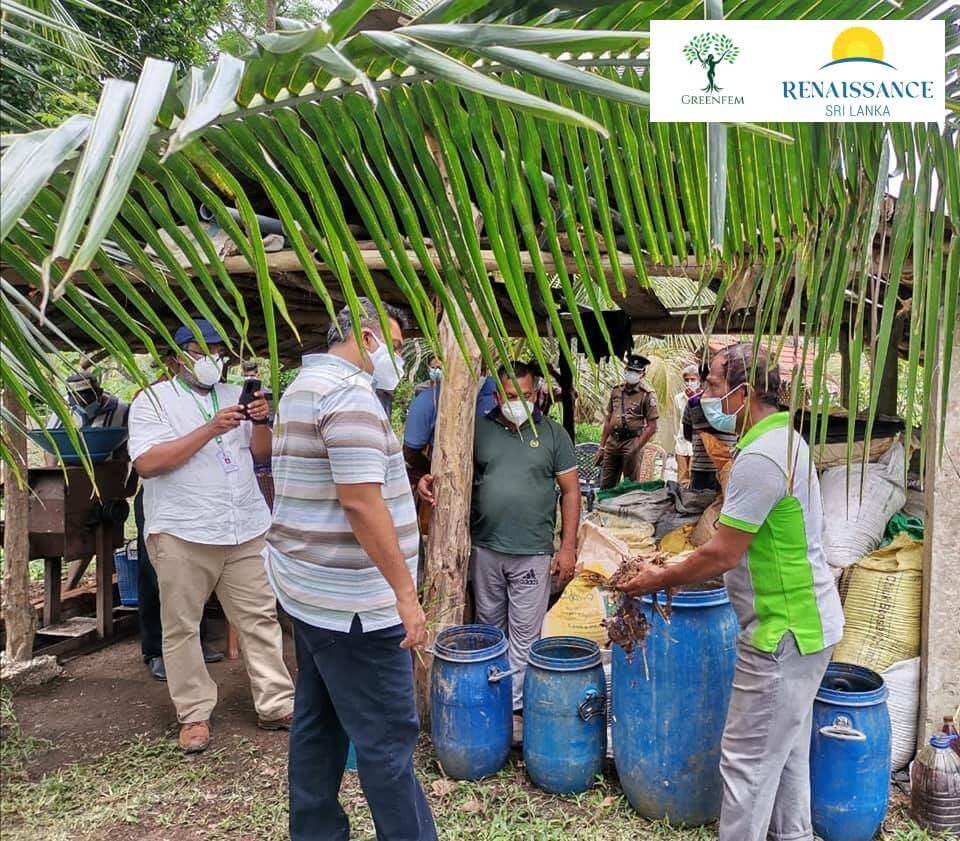How Sri Lanka’s Farmers Can Transition to Organic Agriculture Through a Smallholder-Centric Approach Over a Large Plantation Model
Sustainable development practitioners and organizations like the Food and Agriculture Organization (FAO) are increasingly demonstrating that small-scale farming is more resource-friendly and resource-saving in a world rapidly depleting its natural resources. Smallholder farming is emerging as the best method to ensure food security in the future. Unfortunately, Sri Lanka has, over the last few centuries, adopted conventional industrial age thinking, which has led to the dominance of large-scale agricultural practices. This « big is better » mindset has resulted in massive infrastructure projects, extensive plantations, and centralized control of economic resources. As a result, Sri Lanka’s ability to sustain itself is now under threat.

An extensive tea plantation in Sri Lanka © Renaissance Sri Lanka.
The agricultural sector in Sri Lanka covers nearly two million hectares, with major plantation crops extending over 740,805 hectares (Department of Census and Statistics, 2016). Additionally, 180,000 hectares are occupied by other permanent crops, while paddy farming is practiced on 300,725 hectares. Another 200,000 hectares are annually planted with assorted field crops. These figures highlight the scale of large-scale agriculture in the country. However, transitioning to organic agriculture at this macro level without sufficient ecological infrastructure to support the required ecosystem services would likely result in failure. Therefore, policymakers must avoid falling into this trap.

Paddy is cultivated on a large scale © Renaissance Sri Lanka
The decline in the average size of smallholdings in Sri Lanka further complicates the situation. The average size has decreased by 64% over the last 56 years, from 1.3 hectares in 1946 to 0.47 hectares by 2022 (Department of Census and Statistics, 2022). Additionally, 66% of cropland is rain-fed and increasingly vulnerable to climate variability and extremes (IUCN, 2016). This situation necessitates a risk mitigation approach that supports smallholder communities in adapting to climate change and improving farming techniques to reduce its impacts, such as adopting natural farming based on ecosystem approaches.
Targeting smallholders first in the transition to organic agriculture is crucial. Success in this endeavor requires treating the agro-ecology of micro-regions rather than just individual households or paddy fields. These efforts are more intense, encompass a broader range of activities than mere input replacement, and require strong monitoring to ensure that outcomes remain on track. Although challenging conventional thinking, this approach is necessary for a stable and prosperous Sri Lanka.
Challenges of the Current Large-Scale Agricultural Model
The dominance of large plantations in Sri Lanka has several drawbacks. Large-scale monoculture plantations deplete soil nutrients, reduce biodiversity, and increase vulnerability to pests and diseases. The reliance on chemical fertilizers and pesticides further degrades soil health and pollutes water sources, leading to long-term environmental damage. Moreover, large plantations often prioritize export-oriented crops, which can undermine food security by reducing the availability of diverse and nutritious local foods.

Degradation of soil health due to large-scale tea cultivation © Renaissance Sri Lanka
Advantages of a Smallholder-Centric Approach
In contrast, smallholder farming offers several advantages. Small-scale farms tend to be more diverse, growing a variety of crops that enhance biodiversity and improve resilience to pests and diseases. Smallholders are more likely to adopt sustainable practices, such as crop rotation, intercropping, and agroforestry, which contribute to soil health and water conservation. Furthermore, smallholder farming can be more labor-intensive, creating employment opportunities and supporting rural economies.
Steps to Transition Smallholders to Organic Agriculture
- Training and Education: Providing training and education on organic farming techniques is essential. Smallholders need to understand the principles of organic agriculture, including soil management, natural pest control, and the use of organic fertilizers. Extension services and farmer-to-farmer learning networks can be effective in disseminating knowledge.
- Access to Resources: Ensuring access to traditional seeds, organic inputs, and appropriate tools is crucial. Smallholders often face difficulties in obtaining these resources, which can hinder their transition to organic farming. Establishing seed banks and local input supply chains can help address this issue.
- Financial Support: Transitioning to organic agriculture can involve initial costs that smallholders may struggle to afford. Providing financial support, such as grants, low-interest loans, and subsidies for organic certification, can ease this burden and encourage more farmers to make the switch.
- Market Access: Developing markets for organic produce is vital for the success of smallholder organic farming. This includes creating local, regional, and international markets that value and pay premium prices for organic products. Farmers’ markets, cooperatives, and direct-to-consumer sales can help smallholders access these markets.
- Policy Support: Strong policy support from the government is necessary to create an enabling environment for organic agriculture. This includes regulations that promote organic farming, incentives for sustainable practices, and investment in research and development to advance organic methods.
- Community-Based Approaches: Organizing smallholders into cooperatives or farmer groups can provide collective strength and resources. These groups can share knowledge, pool resources, and gain better access to markets and financial support.
Renaissance Sri Lanka: Building Future Ecosystems Through Collaboration
Renaissance Sri Lanka is proud to build Sri Lanka’s future ecosystems through sustainable agricultural practices. In 2021, we collaborated with our partner, GREENFEM Ecological Farming Training Center, to support smallholders in transitioning to organic farming. This partnership is a model for promoting sustainable agriculture and empowering local farmers.
The Greenfem Ecological Farming Training Center specializes in teaching farmers how to grow organic paddy, integrating both theoretical knowledge and practical approaches to agroecological farming. Farmers receive comprehensive training that covers the principles of organic agriculture, soil health management, natural pest control, and the production of organic inputs.

Teaching how to produce natural fertilizes compost © Renaissance Sri Lanka and GREENFEM
Through hands-on workshops, farmers explore various methods of organic input production, such as composting and the creation of natural fertilizers and pesticides. This training not only enhances their technical skills but also fosters a deeper understanding of the environmental benefits of organic farming.
By equipping smallholders with the necessary tools and knowledge, Renaissance Sri Lanka and GREENFEM are driving a significant shift towards sustainable agriculture in Sri Lanka. This initiative not only promotes healthier ecosystems but also ensures the long-term viability and prosperity of the country’s farming communities.
Conclusion
Transitioning Sri Lanka’s agriculture to a smallholder-centric, organic model is not only feasible but necessary for sustainable development. By focusing on smallholders, providing the necessary support and resources, and adopting community-based approaches, Sri Lanka can build a resilient agricultural sector that protects the environment, enhances food security, and supports rural livelihoods. This shift requires challenging conventional thinking and making difficult decisions, but the long-term benefits for the country’s sustainability and prosperity are undeniable.
Reference
Hector Kobbekaduwa Agrarian Research and Training Institute. Roadmap for Converting Sri Lanka to organic farming Accessed May 2024




